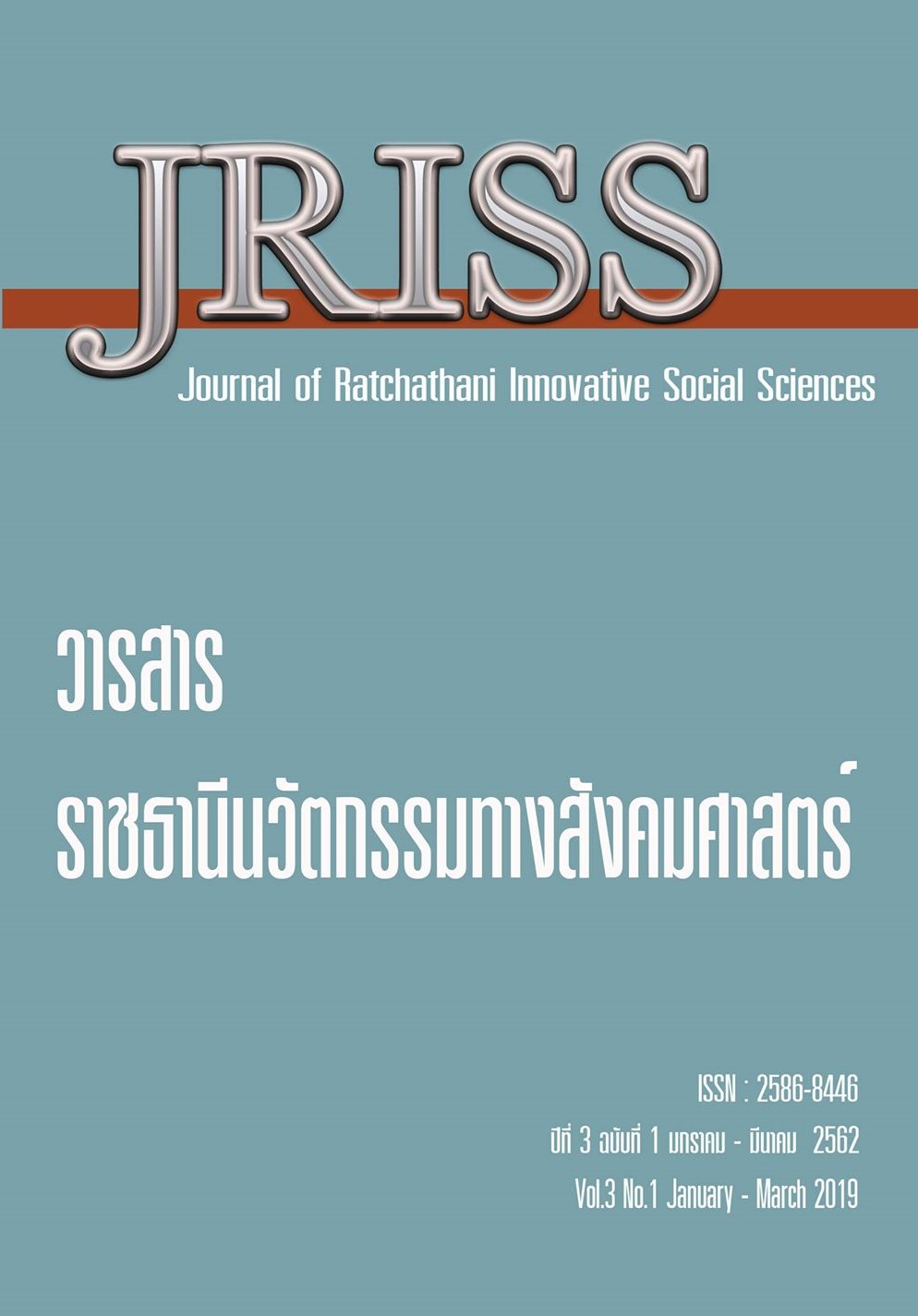Development of the Learning Achievement Using the Learning Activity Series of ZIPPA in the Topic Human and Environment for the Third Grade Students
Main Article Content
Abstract
There are three objectives of this research; there were 1) to develop the learning by using series of activity according to ZIPPA in the topic human and environment for the third grade students. The efficiency level was set according to evaluation principle by 80/80, 2) to compare learning achievement of the third grade students at the pre-test and the post-test in learning by using the learning activity series of ZIPPA in the topic human and environment, and 3) to study the satisfaction of the third grade students on the learning management using the learning activity series of ZIPPA.
Thirty-three students studying in grade three were randomly selected to be participants of the study. They were all from U-toompornphisai kindergarten school, under the Office of Sisaket primary education area 2.
The research findings were as follows:
- The efficacy of process and results (E1/E2) of learning activity series of ZIPPA in the topic of human and environment for the third grade students, the first series called “Changing of environment in community from the past to the present” evaluated with 82.61/80.43, the second series “Relying on environment and natural substances” was rated at 83.65/83.04, the third series “Pollution and initiation of pollution caused by human” was graded at 83.65/82.17, the fourth series “The difference between city and countryside” was 84.00/84.78 and the fifth series “Changing of environment in the countryside” was 84.35/83.91. All the learning activity series was efficiently successful following to the evaluation standard as expected from the beginning.
- 2. The learning achievement of the third grade students using the learning activity series of ZIPPA in the topic of human and environment for the third grade students statistically showed that the post-test result was significantly higher than the pre-test.
- The satisfaction of students on the learning management by learning activity series of ZIPPA in the topic of human and environment the third grade students was at high level.
Article Details
ความคิดเห็นและข้อเสนอแนะใด ๆ ที่นำเสนอในบทความเป็นของผู้เขียนแต่เพียงผู้เดียวโดยบรรณาธิการ กองบรรณาธิการ และคณะกรรมการวารสารราชธานีนวัตกรรมทางสังคมศาสตร์ไม่ได้มีส่วนเกี่ยวข้องแต่อย่างใด มหาวิทยาลัย บรรณาธิการ และกองบรรณาธิการจะไม่รับผิดชอบต่อข้อผิดพลาดหรือผลที่เกิด จากการใช้ข้อมูลที่ปรากฏในวารสารฉบับนี้
References
กาญจนา กาฬภักดี. (2550). การศึกษาผลสัมฤทธิ์ทางการเรียนและค่านิยมทางวิทยาศาสตร์ด้านการมีเหตุผลของนักเรียนชั้นมัธยมศึกษาปี่ที่ 2 ด้านกระบวนการจัดการเรียนรู้ตามรูปแบบ CIPPA. การศึกษามหาบัณฑิต มหาวิทยาลัยศรีนครินทรวิโรฒ.
ชนาธิป พรกุล.(2543). รูปแบบการจัดการเรียนการสอนที่ เน้นผู้เรียนเป็นศูนย์กลาง. กรุงเทพมหานคร : โรงพิมพ์แห่งจุฬาลงกรณ์มหาวิทยาลัย.
ชัยยงค์ พรหมวงศ์. (2537). การทดสอบประสิทธิภาพชุดการสอน. เอกสารการสอนชุดวิชา เทคโนโลยีและสื่อสารการศึกษา หน่วยที่ 1 – 5. กรุงเทพ: หาวิทยาลัยสุโขทัยธรรมาธิราช.
ดารินทร์ ตนะทิพย์. (2545). ผลของการสอนโดยใช้รูปแบบการเรียนการสอนซิปปา ที่เน้นกระบวนการเรียนรู้ทางภาษา ที่มีต่อผลสัมฤทธิ์ทางการเรียนและเจตคติ ต่อการเรียนภาษาอังกฤษของนักเรียนชั้นประถมศึกษาปีที่ 6. วิทยานิพนธ์หลักสูตรครุศาสตรมหาบัณฑิต, จุฬาลงกรณ์มหาวิทยาลัย.
ทิศนา แขมมณี.(2542). รายงานการวิจัยเรื่อง การทดลองรูปแบบฝึกทักษะการทำงานงานกลุ่มสำหรับนักเรียนระดับประถมศึกษา. ภาควิชาประถมศึกษา คณะครุศาสตร์ จุฬาลงกรณ์ มหาวิทยาลัยและกองวิชาการ สำนักงานคณะกรรมการการประถมศึกษาแห่งชาติ. กรุงเทพฯ : โรงพิมพ์อักษรไทย.
ทิศนา แขมมณี. (2545). การจัดการเรียนการสอนโดยยึดนักเรียนเป็นศูนย์กลางซิปปาโมเดล. วารสารวิชาการ.
ทิศนา แขมมณี. (2552). รูปแบบการเรียนการสอน:ทางเลือกที่หลากหลาย.กรุงเทพฯ:สำนักพิมพ์จุฬาลงกรณ์มหาวิทยาลัย.
สาวิตรี ยิ้มช้อย. (2548). การเปรียบเทียบผลสัมฤทธิ์ทางการเรียนกลุ่มสาระการเรียนรู้สังคมศึกษา ศาสนา และวัฒนธรรม และความคิดสร้างสรรค์ของนักเรียนชั้นประถมศึกษาปีที่ 5 ที่จัดการเรียนรู้แบบโมเดลซิปปา (CIPPA MODEL) กับวิธีสอนแบบปกติ. วิทยานิพนธ์สาขาวิชาหลักสูตรและการสอน มหาวิทยาลัยราชภัฏพระนครศรีอยุธยา.
สำลี รักสุทธี. (2544). เทคนิควิธีการจัดการเรียนการสอนและเขียนแผนการสอนโดยยึดผู้เรียนเป็นสำคัญ. กรุงเทพฯ: พัฒนาศึกษา.
อรทัย มูลคำ. (2543). Child Centre : storyline method การบูรณาการหลักสูตรและการเรียนการสอนที่เน้นผู้เรียนเป็นศูนย์กลาง. กรุงเทพฯ : ที พี พริ้นท์ จำกัด.


